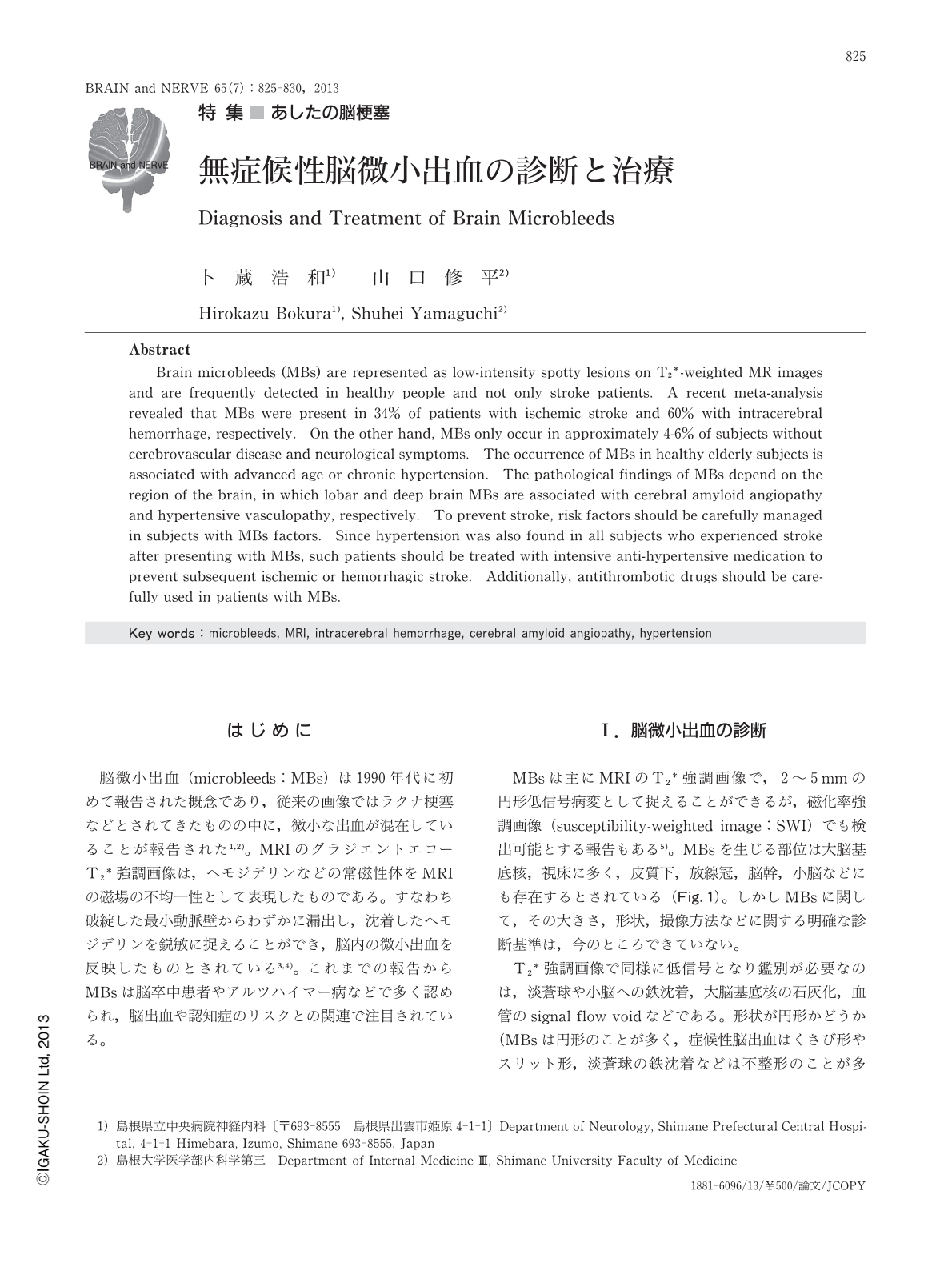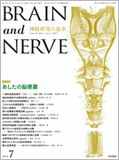Japanese
English
- 有料閲覧
- Abstract 文献概要
- 1ページ目 Look Inside
- 参考文献 Reference
はじめに
脳微小出血(microbleeds:MBs)は1990年代に初めて報告された概念であり,従来の画像ではラクナ梗塞などとされてきたものの中に,微小な出血が混在していることが報告された1,2)。MRIのグラジエントエコーT2*強調画像は,ヘモジデリンなどの常磁性体をMRIの磁場の不均一性として表現したものである。すなわち破綻した最小動脈壁からわずかに漏出し,沈着したヘモジデリンを鋭敏に捉えることができ,脳内の微小出血を反映したものとされている3,4)。これまでの報告からMBsは脳卒中患者やアルツハイマー病などで多く認められ,脳出血や認知症のリスクとの関連で注目されている。
Abstract
Brain microbleeds (MBs) are represented as low-intensity spotty lesions on T2*-weighted MR images and are frequently detected in healthy people and not only stroke patients. A recent meta-analysis revealed that MBs were present in 34% of patients with ischemic stroke and 60% with intracerebral hemorrhage, respectively. On the other hand, MBs only occur in approximately 4-6% of subjects without cerebrovascular disease and neurological symptoms. The occurrence of MBs in healthy elderly subjects is associated with advanced age or chronic hypertension. The pathological findings of MBs depend on the region of the brain, in which lobar and deep brain MBs are associated with cerebral amyloid angiopathy and hypertensive vasculopathy, respectively. To prevent stroke, risk factors should be carefully managed in subjects with MBs factors. Since hypertension was also found in all subjects who experienced stroke after presenting with MBs, such patients should be treated with intensive anti-hypertensive medication to prevent subsequent ischemic or hemorrhagic stroke. Additionally, antithrombotic drugs should be carefully used in patients with MBs.

Copyright © 2013, Igaku-Shoin Ltd. All rights reserved.


